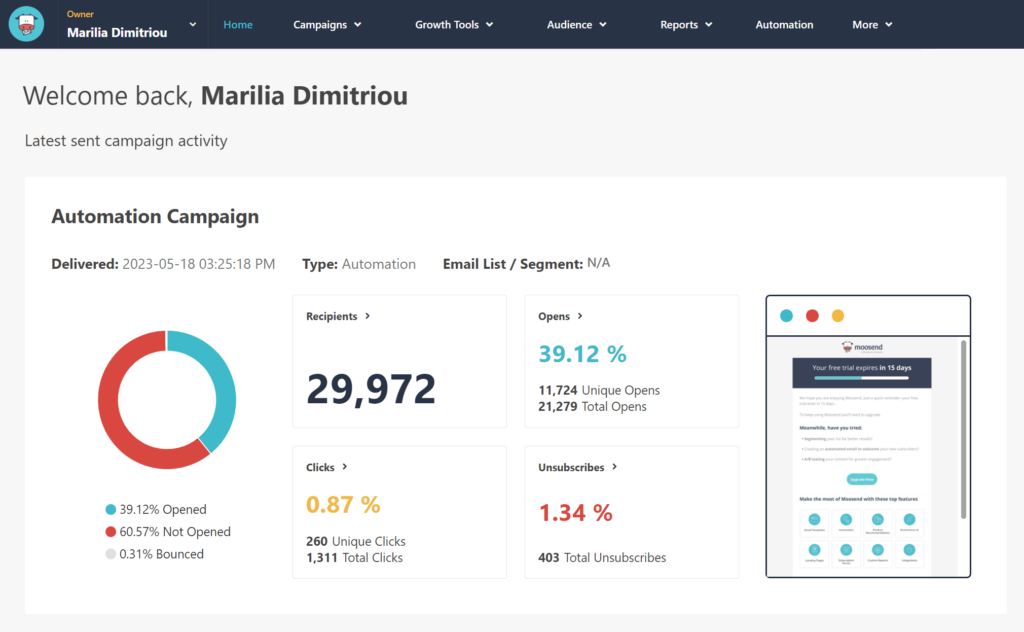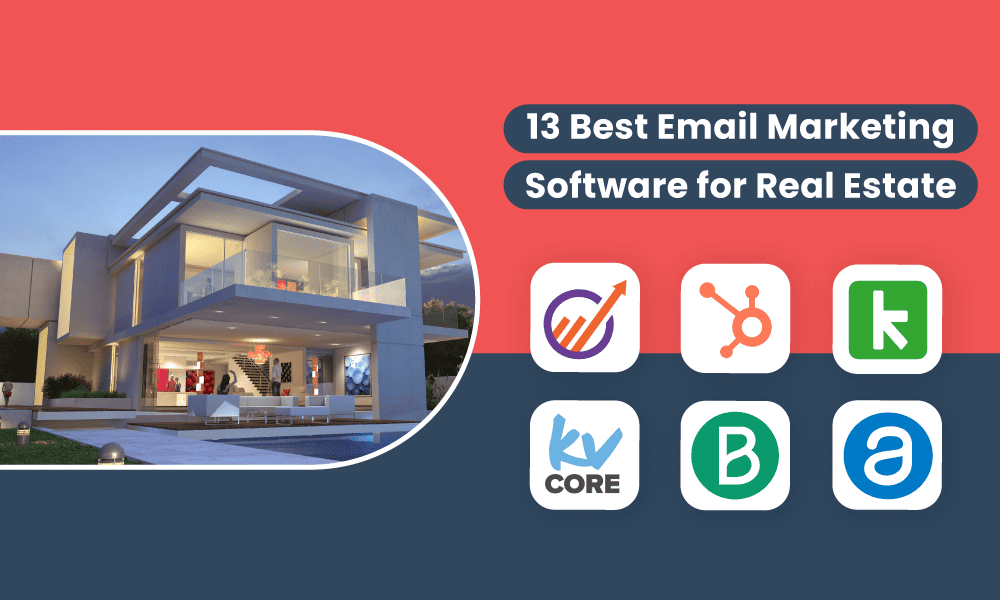Real estate CRM email campaigns are crucial for success. They help manage leads and nurture client relationships.
Effective email campaigns can boost your real estate business. They keep you connected with clients and help close deals faster. But what makes an email campaign successful? In this blog post, we’ll explore the best real estate CRM email campaigns.
We’ll discuss strategies to improve your communications. You’ll learn how to engage potential clients and maintain relationships with past ones. Whether you’re new to email marketing or looking to enhance your current approach, this guide will provide valuable insights. Stay tuned to discover how to create impactful email campaigns that drive results in the real estate market.
Introduction To Real Estate Crm
A Real Estate CRM (Customer Relationship Management) system helps manage client interactions. It streamlines processes and improves customer service. This is crucial in real estate, where relationships drive success.
Importance Of Crm
CRM systems store all client information in one place. This makes it easy to access and update. Agents can quickly find client details and history.
Effective CRMs track all interactions and follow-ups. This ensures no communication is missed. Agents can see the status of each lead and client. This helps in managing workloads efficiently.
CRMs also automate repetitive tasks. This saves time and reduces errors. Agents can focus on building relationships and closing deals.
Benefits For Real Estate
CRMs offer many benefits specifically for real estate professionals:
- Improved Organization: Keep all client data in one system.
- Better Follow-Up: Automated reminders ensure timely follow-ups.
- Enhanced Communication: Track all emails and calls.
- Lead Management: Prioritize leads based on their engagement.
- Analytics: Analyze data to understand market trends.
Using a CRM can lead to higher productivity. Agents spend less time on admin tasks. They have more time for clients. This can increase satisfaction and loyalty.
| Feature | Benefit |
|---|---|
| Centralized Data | Easy access to all client information |
| Automated Tasks | Save time on repetitive work |
| Follow-Up Reminders | Ensure timely communication with clients |
| Lead Prioritization | Focus on high-potential leads |
| Data Analytics | Gain insights into market trends |

Credit: www.act.com
Discover engaging insights on CRM and Customer Support by reading this featured article. Saas CRMs for Multilingual Customer Support: Boost Global Engagement
Key Features Of Effective Crm
Choosing the right CRM for real estate email campaigns can boost your success. An effective CRM streamlines processes and enhances client interactions. It should help manage leads, automate communications, and track results. Let’s dive into the key features of an effective real estate CRM.
Lead Management
Lead management is crucial for any real estate business. A good CRM helps you organize and track leads. You can categorize leads by their stage in the buying process. This ensures you know where each lead stands.
Effective lead management tools allow easy data entry. You can quickly add new leads and update information. This keeps your database current and accurate. Additionally, you can set reminders for follow-ups. This ensures you never miss an opportunity.
Automated Communication
Automated communication is a key feature of an effective CRM. It allows you to send timely and relevant messages. You can schedule emails and messages based on lead activity. This keeps potential clients engaged without extra effort.
With automation, you can personalize messages for better engagement. Use templates and pre-defined triggers to send the right message at the right time. This ensures a consistent communication strategy. Automation frees up time for other important tasks.
Creating Successful Email Campaigns
Creating successful email campaigns is essential for real estate professionals. Engaging content can attract potential clients and retain existing ones. Effective email campaigns require careful planning and execution. This section will explore techniques and strategies to make your real estate email campaigns successful.
Personalization Techniques
Personalization can make your emails more engaging. Use the recipient’s name in the subject line. Addressing them by name creates a personal touch. Customize the content based on their interests. If they are looking for homes, send listings that match their preferences. Personalization helps build a connection with your audience.
Another technique is to use dynamic content. This means different email content for different recipients. For example, first-time buyers get tips on buying a home. Seasoned investors get information on market trends. Personalization can increase open and click rates.
Dive into CRM and Customer Support and uncover valuable details in this article. Why Does Zoho CRM Have List Descending: Top Benefits Explained
Segmentation Strategies
Segmentation means dividing your email list into smaller groups. Each group has similar characteristics. You can segment based on location, buying preferences, or stage in the buying process. Sending targeted emails to these segments makes your content more relevant.
For instance, send property listings to those looking to buy soon. Send market updates to those still considering their options. Segmentation ensures that your audience receives content that interests them. This can lead to higher engagement rates.
Another segmentation strategy is to track engagement. Segment your list based on how recipients interact with your emails. Those who open and click often may receive more frequent updates. Those who rarely engage may need a different approach. Segmentation helps in delivering the right message to the right people.
Writing Compelling Email Content
Writing compelling email content is crucial for the success of real estate CRM email campaigns. Engaging content not only captures attention but also drives action. This section explores key elements to make your emails stand out.
Subject Lines
The subject line is the first thing your audience sees. A strong subject line can significantly increase open rates. It should be short, clear, and intriguing.
- Keep it under 50 characters.
- Use action words like “Discover,” “Learn,” or “Find.”
- Personalize it with the recipient’s name or location.
- Create a sense of urgency or curiosity.
Examples:
| Good Subject Line | Reason |
|---|---|
| Find Your Dream Home in New York! | Personalized with location. |
| Discover Your New Home Today | Uses action words. |
Email Body
The body of the email is where you provide value. It should be clear, concise, and engaging.
- Personalize the greeting with the recipient’s name.
- Start with a strong opening sentence to hook the reader.
- Provide useful information or a valuable offer.
- Use bullet points to make the email easy to read.
- End with a clear call to action.
Example:
Looking for your dream home? We have some exciting listings just for you. Check out our top picks:
- Beautiful 3-bedroom house in downtown.
- Cozy apartment with a stunning view.
- Spacious villa with a large garden.
Don’t miss out! View all listings now.
Want to know more about CRM and Customer Support? Check out this article for helpful insights. Real-Time Metrics Tracking for E-Commerce CRM Users: Boost Sales Now
Designing Eye-catching Templates
Designing eye-catching templates is crucial for effective real estate CRM email campaigns. Beautiful emails grab attention and engage readers. They make your message stand out in a crowded inbox. Let’s explore key aspects of creating such templates.
Visual Elements
Strong visual elements create an immediate impact. Use high-quality images of properties. Include your logo for brand consistency. Maintain a clean layout to avoid clutter. Use white space to make your content easy to read. Bold headlines capture attention quickly. Color schemes should match your brand identity. Visual elements should complement the text, not overwhelm it.
Responsive Design
Responsive design ensures your emails look great on any device. Many people read emails on their phones. Your template must adapt to different screen sizes. Use a simple, single-column layout. Avoid tiny fonts and small buttons. Test your emails on various devices before sending. Ensure all links and buttons are easily clickable. A responsive design keeps your audience engaged.

Credit: moosend.com
Timing And Frequency Of Emails
The timing and frequency of your emails play a crucial role in the success of your real estate CRM email campaigns. Send emails at the right time and with the right frequency to maximize engagement and conversion rates.
Optimal Send Times
Finding the optimal send times is essential for email campaign success. Studies show that certain days and times yield higher open rates. Consider these factors when choosing the best send times:
- Weekdays: Tuesday, Wednesday, and Thursday are generally the best days to send emails.
- Time of Day: Mid-morning (10 AM) and early afternoon (1-3 PM) tend to have higher open rates.
Experiment with different send times to see what works best for your audience. Use A/B testing to find the most effective timing for your specific market.
Balancing Frequency
Maintaining a balance in email frequency is key. Send too many emails, and you risk annoying your subscribers. Send too few, and you may lose their interest. Here are some tips to balance frequency:
- Weekly Emails: Sending one email per week is a good starting point.
- Segment Your List: Tailor frequency based on subscriber engagement. High engagement can handle more frequent emails.
- Monitor Unsubscribe Rates: High unsubscribe rates may indicate you’re sending too many emails.
Use CRM tools to track engagement metrics. Adjust your email frequency based on your subscribers’ responses.
Combining optimal send times with balanced frequency will enhance your real estate CRM email campaigns.
Tracking And Analyzing Campaign Performance
Tracking and analyzing the performance of your real estate CRM email campaigns is essential. It helps you understand what works and what doesn’t. By focusing on key metrics, you can improve your campaigns based on actual data. This process ensures your emails are effective and engaging.
Key Metrics
To track your email campaign performance, monitor these key metrics:
- Open Rate: The percentage of recipients who open your email.
- Click-Through Rate (CTR): The percentage of recipients who click on links in your email.
- Bounce Rate: The percentage of emails that did not reach the recipient’s inbox.
- Unsubscribe Rate: The percentage of recipients who opt out of future emails.
- Conversion Rate: The percentage of recipients who completed a desired action, like filling out a form or making a purchase.
Improving Based On Data
Use the data from these metrics to improve your email campaigns:
- Analyze Open Rates: If your open rate is low, try different subject lines. Make them more engaging or personalized.
- Enhance CTR: If your CTR is low, review your email content. Ensure your call-to-action (CTA) is clear and compelling.
- Reduce Bounce Rates: Clean your email list regularly. Remove invalid or inactive email addresses.
- Minimize Unsubscribe Rates: Make sure your content is relevant to your audience. Segment your email lists to send targeted messages.
- Boost Conversion Rates: Simplify the process for completing the desired action. Make sure the landing page is user-friendly and matches your email content.
By focusing on these key metrics and making data-driven improvements, you can create more effective real estate CRM email campaigns.

Credit: www.engagebay.com
Case Studies Of Successful Campaigns
Understanding what makes a real estate CRM email campaign successful can help you improve your own efforts. Learning from real-life examples provides insights into strategies that work. Below, we dive into some standout campaigns and the key takeaways from each.
Real-life Examples
Several companies have implemented email campaigns with great success. Here are a few standout cases:
| Company | Campaign Focus | Outcome |
|---|---|---|
| XYZ Realty | New Property Listings | Increased Open Rates by 40% |
| ABC Homes | Customer Testimonials | Boosted Engagement by 30% |
| HomeFinders | Market Updates | Improved Click-Through Rates by 25% |
Lessons Learned
These campaigns share some common strategies that contributed to their success:
- Personalization: Tailoring emails to individual preferences boosted engagement.
- Consistent Branding: Maintaining brand consistency helped build trust.
- Clear Calls-to-Action: Direct and clear CTAs increased response rates.
- Valuable Content: Providing useful information kept subscribers interested.
By incorporating these strategies, you can improve your own real estate CRM email campaigns. Focus on personalization, brand consistency, clear CTAs, and valuable content. These elements are crucial for a successful campaign.
Conclusion And Next Steps
As we reach the conclusion of our discussion on the best real estate CRM email campaigns, it’s time to summarize the key strategies and outline the next steps for implementing your plan. By using these strategies, you can enhance your email marketing efforts and boost your real estate business.
Summary Of Strategies
We covered several effective strategies for real estate CRM email campaigns:
- Segmenting Your Audience: Divide your email list based on criteria such as location, buying stage, and preferences.
- Personalization: Use personalized content to make your emails more relevant and engaging.
- Automated Follow-Ups: Set up automated emails to nurture leads and maintain consistent communication.
- Content Variety: Include various types of content like listings, blog posts, and market updates.
- Tracking and Analyzing: Monitor open rates, click-through rates, and other metrics to improve your campaigns.
Implementing Your Plan
Now that you know the strategies, it’s time to put them into action. Follow these steps to implement your plan:
- Choose the Right CRM: Select a real estate CRM that fits your needs and integrates well with your email marketing tools.
- Segment Your List: Use your CRM to divide your contacts based on relevant criteria.
- Create Personalized Content: Develop email templates that include personalized elements such as the recipient’s name and property preferences.
- Set Up Automation: Configure automated email sequences for different stages of the buyer’s journey.
- Track Performance: Regularly review your email campaign metrics and adjust your strategy as needed.
By following these steps, you can create effective real estate CRM email campaigns that engage your audience and drive results. Stay consistent, keep learning, and adapt to changes in the market to achieve the best outcomes.
Frequently Asked Questions
What Is A Real Estate Crm Email Campaign?
A real estate CRM email campaign is a series of automated emails designed to nurture leads, engage clients, and manage customer relationships effectively.
Why Use Crm For Real Estate Email Campaigns?
Using a CRM for real estate email campaigns helps streamline communication, track interactions, and personalize messages, improving client engagement and conversion rates.
How To Create Effective Real Estate Crm Email Campaigns?
To create effective real estate CRM email campaigns, segment your audience, personalize content, use compelling subject lines, and analyze performance metrics.
What Are The Benefits Of Real Estate Crm Email Campaigns?
The benefits of real estate CRM email campaigns include improved lead management, enhanced client relationships, increased engagement, and higher conversion rates.
Conclusion
Real estate CRM email campaigns can transform your business. They help build relationships. They keep clients informed and engaged. Use the right strategies to boost your success. Personalization and timely follow-ups are key. Test and analyze results for better performance.
Stay consistent and watch your client base grow. Happy emailing!











